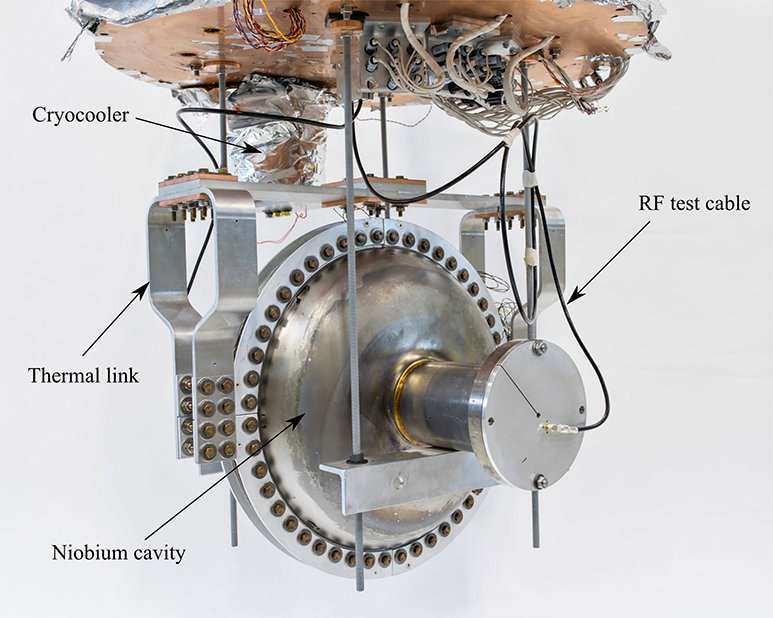Cryocooler cools an accelerator cavity

Particle accelerators are made of structures called cavities, which impart energy to the particle beam, kicking it forward. One type of cavity is the superconducting radio-frequency, or SRF, cavity. Usually made of niobium, SRF cavities require extreme cold to operate. A Fermilab team developed a new way of cooling SRF cavities without liquid helium. The new system is easier to operate and simpler to construct.
Electron beams could help clean water and repair roads. The barrier is the need for ultra-cold liquid helium. For the first time, a team has cooled a superconducting accelerator cavity without liquid helium. Replacing liquid helium with plug-and-play devices called cryocoolers could make SRF technology available to industry. Energy-efficient SRF accelerators can provide high-average-power electron beams. The beams could strengthen materials, reconstruct asphalt pavement, treat wastewater, and more.
All SRF particle accelerators to-date use liquid helium to maintain the extremely cold temperatures necessary for sustaining superconductivity. Liquid-helium operation demands complex infrastructure: a liquefaction plant, distribution lines, gas recovery, purification systems, and cavity cryomodules that can withstand high pressure. There are also safety hazards associated with operation of the liquid helium. Although such an infrastructure is appropriate for large-scale research accelerators, it can be too complex and costly for industrial applications.
For the first time, a team at Fermilab's Illinois Accelerator Research Center has cooled an accelerating cavity to cryogenic temperatures without the use of liquid helium. They achieved this by connecting a cavity to a commercially available cryocooler, using a Fermilab-patented technology.
Connecting the cavity to the cryocooler was a significant challenge that required investigating various materials and designing custom components. The team produced niobium conduction rings and connected them to the cavity shell using electron-beam welding. They also developed niobium-aluminum joints that allowed heat to flow easily from the cavity to the cryocooler. To generate heat into the cavity, the team used a simple plug-and-play radio-frequency driver, as in laboratory accelerators.
Electromagnetic gradients are generated within SRF cavities; stronger gradients impart more energy to the beam. This first-ever cryogen‑free operation produced a gradient of 0.5 MV/m on a single-cell, 650-MHz niobium cavity. Fermilab researchers plan to soon achieve gradients up to 10 MV/m by using higher capacity cryocoolers and capitalizing on other recent advances in cavity technology. The team is exploring the application of conduction cooling technology to higher frequencies, multicell cavities, and other radio-frequency structures.
More information: R.C. Dhuley et al. Thermal resistance of pressed contacts of aluminum and niobium at liquid helium temperatures, Cryogenics (2018). DOI: 10.1016/j.cryogenics.2018.06.003
Provided by US Department of Energy




















